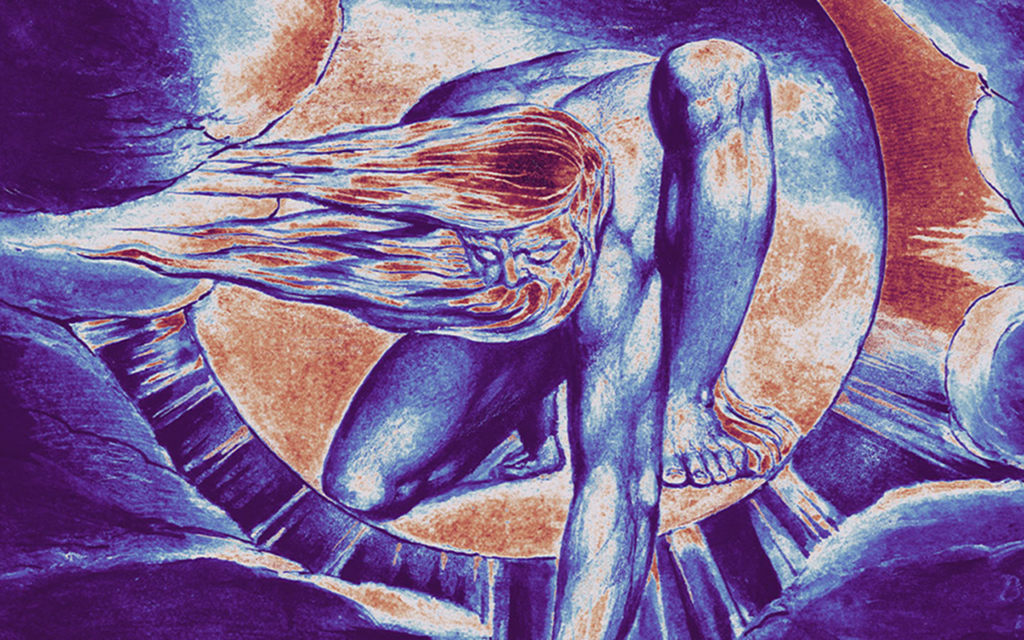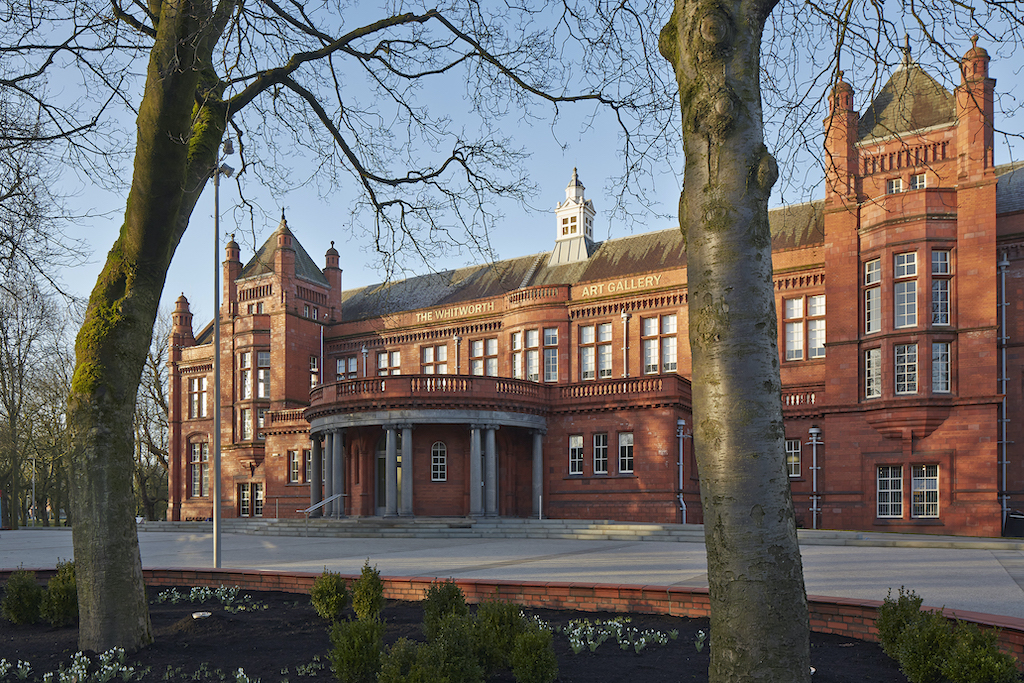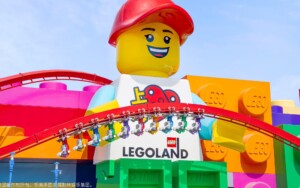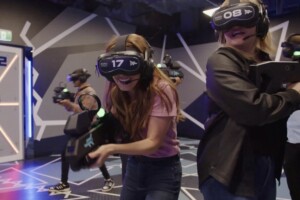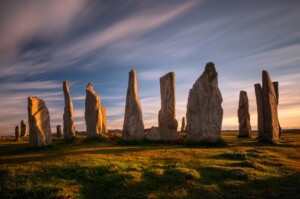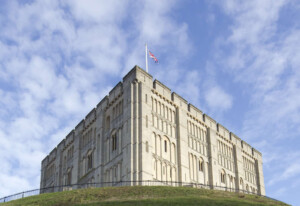NFTs, or non-fungible tokens, have become something of a buzzword in the past couple of years. However, some uncomfortable truths are also emerging about this trend and its carbon footprint. NFTs are created using blockchain, which usually requires large amounts of energy, due to the computations needed for ‘mining’. As an example, the entire bitcoin network, a cryptocurrency also created on blockchain, consumes more energy than a medium sized-country. So, is it possible to create a green NFT?

The Whitworth Art Gallery, part of the University of Manchester in the UK, has been involved in an interesting project to create an NFT with a positive social impact. This uses proof-of-stake blockchain rather than the more energy-intensive and more widely-used proof-of-work model.
During greenloop 2022, Alistair Hudson, director of the Whitworth Art Gallery and Manchester Art Gallery spoke about the project. In this session, he explained more about the museum’s goals in developing the NFT and the technology behind it.
Ancient of Days: creating an ethical NFT
An NFT is a digital ownership certificate that lasts forever. The owner can sell this to another buyer, but only one ownership certificate can exist at any one time. The concept isn’t new. In fact, NFTs have been around since 2014, but are now increasing in popularity and notoriety.
The Ancient of Days project is, on the face of it, like many other NFT projects, says Hudson.
“Essentially, we made our first NFT from a piece of work held in our collection, William Blake‘s Ancient of Days, This was made in 1827 and is one of our most iconic images in the collection. It’s also certainly our most reproduced image.
“It is a hand-tinted print; William Blake made a whole run of these prints and then hand-coloured them. And our image was the last one he did. He was still touching it up, propped up on his pillows on his deathbed in 1827, apparently! It is, in a way, the final one in the long series of these images. It’s unique, but also not unique at the same time. So in terms of what we’re talking about here, it seemed like a very fitting image to use.”
“The subject of it is quite relevant as well. This is Blake’s depiction of Urizen who is trying to control the universe with his compass and to measure it to the nth degree. Blake here is arguing that that’s not the answer to the world’s problems. We need creativity and freedom. We need unlimited and unrestricted approaches to working. Also, there was a little nod here, I thought mischievously to the NFT sold by Beeple for £69 million [Everydays: The First 5000 Days].”
Making a unique image
The Whitworth made an NFT version of The Ancient of Days. It then made 50 copies available on the objkt.com marketplace.
“The other factor in this is that we wanted to make an image that only a museum could make. We didn’t want to just take a simple jpeg of an image that you can Google anyway. This is an image that is produced by multispectral imaging equipment that we share with the John Rylands Library at the University of Manchester. It essentially shows you the density of pigment in the image.”
“It is, in fact, an image made by the processes that only really a museum or a university can employ. So in a way, it has a kind of added value aspect to the image, which is about expanding the research into the work of art as part of this process of dissemination and multiplication and so on and everything that goes with it.”
On the website for the NFT, visitors can hover over the image for a sneak preview. However, the full glory is only revealed once they have made the purchase.
Art and the economy
In terms of the origins of this project, Hudson says he has always had a keen interest in the topic of the economy.
“Although it’s a rather dull subject, in fact, it is the big question of our times. What economy means is basically the operating system for a society. It’s more than just the exchange of money.
“The first exhibition that I did at the Whitworth was called Joy for Ever, or the Political Economy of Art. This was a look back at John Ruskin‘s famous lecture of 1857 in Manchester. He was basically berating all the industrialists and citizens of Manchester, saying they were all filthy capitalists, and the only way to a really true and just world is through the means of art and the application of artistic and creative competence in all aspects of society.”
To build on that exhibition, the museum began to plan a new exhibition for 2023.
“We called this, in a tongue-in-cheek way, Economics the Blockbuster. This included a whole strain of research trends about artists and art-derived economies, and ways of making the world work, which were outside of the kind of the mainstream system. This has a long history but is also very pertinent now.
“We also wanted to make projects with artists or with artworks that would be part of these economic processes, so that we could actually demonstrate alternatives to how things work in the present, simultaneously.”
Ancient of Days: exploring the NFT trend
As the team was developing the Economics the Blockbuster project, the world of NFTs exploded.
“It struck me, as somebody who has a very broad tent understanding of what art is, that as a museum of art, it is our responsibility to explore the many art worlds that are around, and NFTs are becoming a very significant art world. In fact, in the last year sales of NFTs reached around 80 billion in global sales, compared to the traditional art market, which sells for about 50 billion. Already the world of NFTs has surpassed the traditional art market.”
“So, for me, it’s something that you can’t really ignore as an art institution. Art is adapting. Art always changes, and art moves on as our understanding of culture changes. For instance, exhibitions and physical artworks in the frame have really only been the prime delivery vehicle for art for a very short period of human history.”
Hudson adds that he is interested in the future of art, and how it operates in society. This is one of the reasons why this new format was fascinating to him.
“Plus, I’m instilled with a kind of philosophy of learning through making and doing. For me, it wasn’t the right approach to just look at the world events and comment from the sidelines. For me to understand it fully, we had to get our hands dirty. [We had to] actually make one to see what happened.”
A research experiment
In many ways, the Whitworth team treated the Ancient of Days NFT project as a research experiment, says Hudson.
“So, we devised this experiment where we would create an NFT and then we would sell it and market it. And that process of studying and seeing what happens would then be an important part of the project. We would then exhibit the story of what happens with this NFT in Economics the Blockbuster exhibition in 2023.
As a museum with a social purpose, I wanted our take on this to be ethical. I wanted to try and bend this system in a way that started to work for a wider range of people.
The social impact of this project was also key, he adds:
“We were conscious that the world of NFTs is a kind of Wild West gold rush. There are lots of people scrambling to make a fast buck. As a museum with a social purpose, I wanted our take on this to be ethical. I wanted to try and bend this system in a way that started to work for a wider range of people.
“I thought the best way we could do this was to use the money generated from this project for the support of social projects and collaborations with the communities around us in Manchester, and in Moorside where the Whitworth is. In effect, I call it a Robin Hood project.
“It’s redirecting private wealth from this digital Wild West and redirecting it into flows of social capital that have a much wider benefit for people who aren’t in a position to benefit necessarily from this crazy world that’s emerging online.”
Is there such a thing as a green NFT?
In its aim of creating an ethical NFT, how did the Whitworth navigate the sustainability angle and create something more green, given the energy-intensive process behind most blockchain projects?
“I came into this from a position of not knowing and discovering, and that was also part of the project. In the early days when I was suggesting, for example, with the team that we should go for it and make an NFT, there were people who said, ‘Oh my God, how could you possibly get into bed with this filthy world of planet destruction? ‘
“In the process, we decided not to use proof-of-work blockchains. These are associated with currencies like Ethereum, for example, which were, at that time, the mainstay. Instead, we decided that we should lead by example and go with Tezos, which is a proof-of-stake blockchain.”
“In really simple terms, what it means is in the blockchain, which is basically the authentication of these NFTs, is done by computer calculations. Proof-of-work NFTs are given their value by the sheer number of calculations. These are endless calculations on a global network of machines, all corresponding with each other.
“However, proof-of-stake is not based on exponentially increasing numbers of calculations. Instead, it is instead based on a certain number of people investing a stake in the system and relying upon feedback. So it is, in a way, like a one-off transaction rather than a billion transactions. The difference in energy consumed in doing that is huge, factors of hundreds of thousands, millions less.”
Ancient of Days NFT stimulates ongoing conversations

The project is part of a study that the museum is working on with Manchester University.
“There are many sides to the research,” says Hudson. “But we’ve been working with the Manchester Business School on the Economics the Blockbuster project, in conversation with the senior lecturer in banking, Ismail Ertürk.
“Interestingly, he teaches all his business students art as part of his methodology. Because in the world of business and the economy now, the image, the story, the narrative, all these things, the aesthetic is something that is driving business more and more, rather than traditional ideas of economy.
“So, he was very interested to collaborate with us and to generate material and produce exhibitions and projects that would really start to articulate the reality of the world we’re living in, which is very much driven by images and aesthetics, even in terms of machine learning and AI. That’s an ongoing process and ongoing conversation with academics and artists and researchers here.
The Whitworth and Vastari Labs
The Whitworth also did this project in collaboration with Vastari Labs. Vastari is an organisation that has been helping museum and art industry professionals to innovate in the art and tech sector for over ten years. It launched Vastari Labs in Spring 2021, recognising museums’ increasing need to understand and interact with a new era of technologies, such as NFTs, blockchain, the metaverse and Web 3.0
“They were the people who had the know-how to help us to produce the Ancient of Days NFT. They were very keen to develop a better museum culture and a wider understanding of the role of NFTs and the potential they could have for museums.
“We were willing to be one of the first museums to test this. Also, we have been the first museum to produce an NFT as part of its programme. That is distinct from, for example, the museums that have produced NFTs to make money as fundraisers. This was really about integrating this work as part of the artistic programme and our research programme, and generating knowledge for the sector.
“We can track and make public everything that goes on in this project. We can track the money we make, how we do it, how the sales go, and even what the public feedback and interaction have been. And we can use that and offer that as a learning tool, for the whole museum sector.”
Ancient of Days NFT helps to engage a new audience
The team hopes that this innovative project will help it to engage and connect with a wider audience, both in real life and digitally.
“For me, that is at the forefront of where we should be going. How does the museum make this stuff from the 19th Century relevant? How do we make it speak to now? There’s a whole culture of people who go to museums and a whole culture of people who don’t go to museums. It’s our job to show how those images can have currency and relevance in the world today.”
“When we first announced we were doing this project, apart from people being aghast at the idea we were making NFT in the first place, some were also aghast at the idea that somehow this was destroying the original artwork, or devaluing it. For me, it’s no different than producing a postcard or reproducing the image for a book. It’s about disseminating the images and allowing their meaning to move and operate in the world beyond the museum.
“This project absolutely demonstrates that the sort of people who are getting interested and involved in the NFT world are not necessarily the same people that were the culture vultures of the past. And this is where art and culture are going.
“When I ask my kids what they want for Christmas, most of what they ask for is not a physical thing. It will be, for example, a skin for a character in a computer game. In their world, this exists on their screen as much as it does in the tangible world around them. And art needs to try to work out a way to adapt to this.
Revealing the collection

Most museums have a much larger collection than what is on show to the public at any one time. Digital projects like this one help museums leverage their collection for a much broader audience.
“We have our collection on view, like many museums, for a specific amount of time because it deteriorates under the light. So, this is a great way to bring that collection to life.
“At the same time, one of the things to love about our Manchester collections, at both galleries, is that you can make an appointment to see any anything in the collection at any time. So in a way, they’re not out of bounds. But projects like this provide an introduction to people who maybe haven’t thought of these artworks or considered them. Then, maybe on the back of this, they want to come and see the original.
“Something else that’s quite nice is that people started offering tribute NFT to us. They’ve made William Blake tribute NFTs and donated them to us – there was even an artist in Australia who made a felt version of Ancient of Days! Projects like this create a whole culture of investment and enthusiasm and interest. That is something that’s fascinating about this emerging art world, the level of engagement and participation involved in it.
greenloop 23
greenloop 23 – sustainability in visitor attractions, will take place online on 25-26 April 2023. Please get in touch with Ruth if you would like to know more about speaking opportunities or sponsorship.

